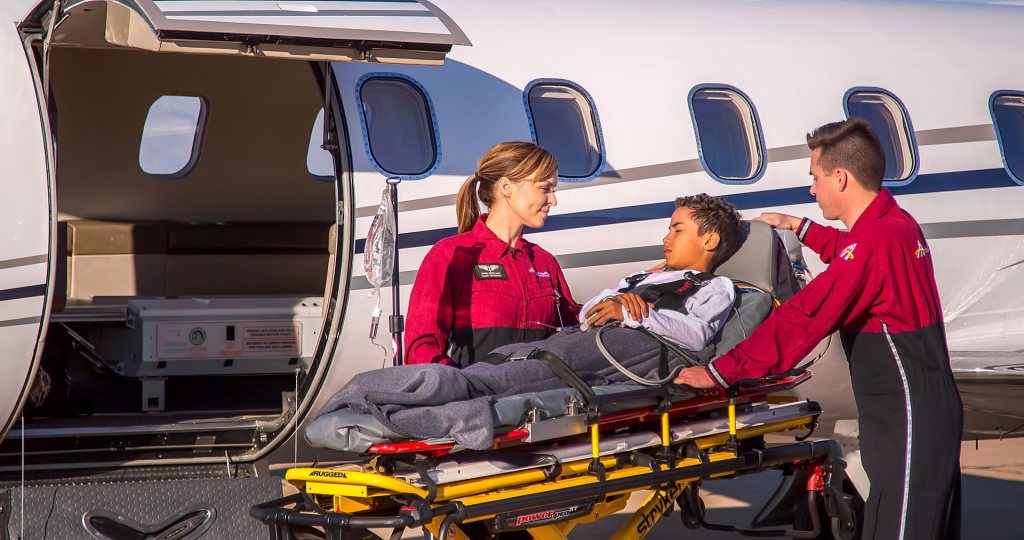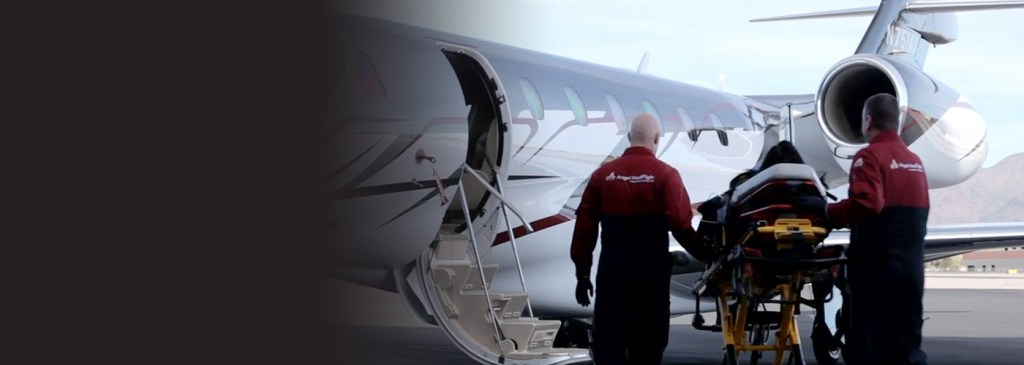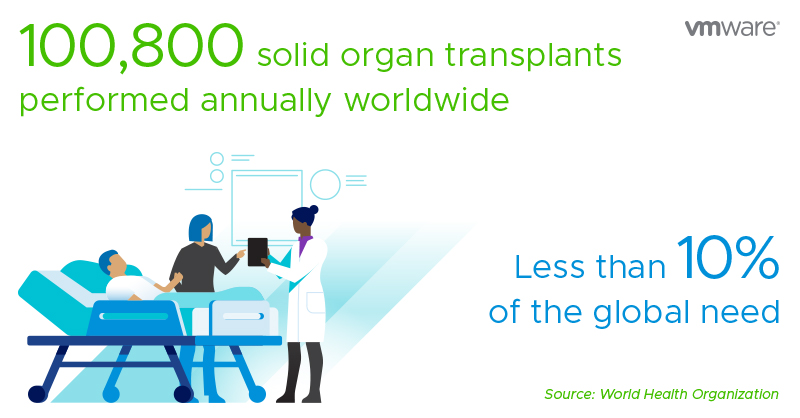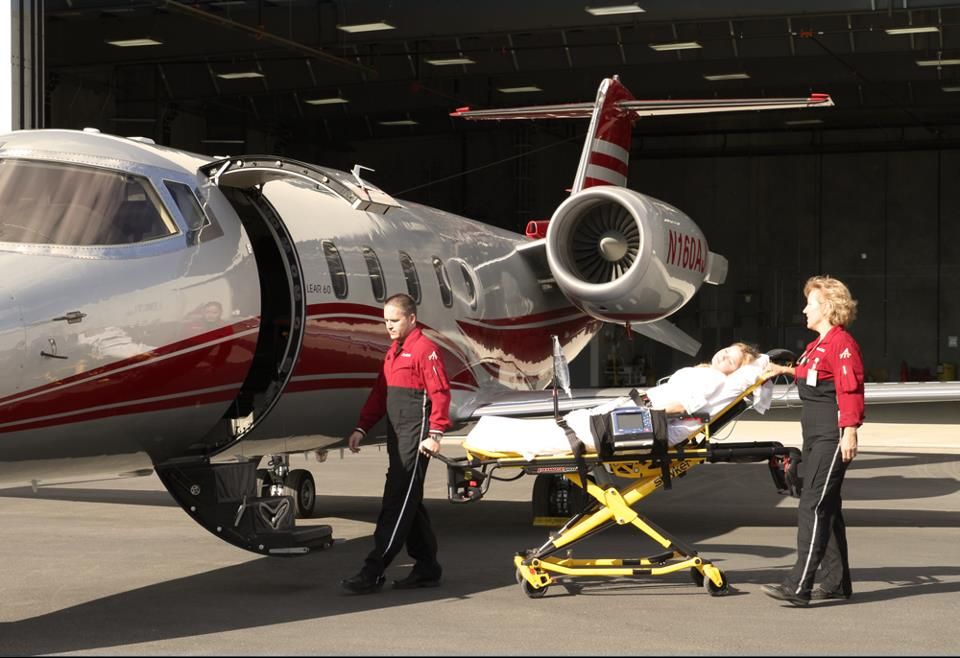From car accidents to sudden illnesses and organ transplants, getting help fast could be the difference between life or death.
The Angel MedFlight team literally flies to the rescue. Since 2007, the air ambulance firm’s team has helped save thousands of lives.

Soldier Fights to Overcome a Traumatic Brain Injury

5-Year-Old Boy with Mitochondrial Disease Dreams of Flying Again

Angel MedFlight Returns Medical Worker to U.S. for Treatment
We were involved in a tragedy a few years ago. We flew one of the unfortunate victims of that tragedy, and the technology played a huge role in that. It was one of the first times that I got to be at a transport, where the husband of the patient came off the plane and hugged me so hard. I really got to see what Angel MedFlight does as an organization.
PAUL GREEN, CIO, ANGEL MEDFLIGHT
What Is an Air Ambulance?
From hot air balloons during the Siege of Paris in 1870 to IoT-powered aircraft today, watch the history of air ambulances.
From Hours to Minutes
(During an) urgent flight … we need to be able to utilize technology. (We need to) know from the moment we get the phone call where our closest aircraft is and how quickly we can get the patient to the organ.
JENNIFER PETERSON, FLIGHT COORDINATOR, ANGEL MEDFLIGHT

Several years ago, Angel MedFlight had the opportunity to transform their company. The leadership team knew they had a powerful opportunity.
“We went down this path of, ‘What can we do to not make this just a company, but the best healthcare air ambulance company in the world? How can we make it easier for employees? How can we allow the employees to provide the highest level of healthcare, clinical excellence, as a well as customer care?’” says Green.
My Real-Life Moment
Hear from Dena Piquette-Garcia, a recipient of Angel MedFlight’s uniquely compassionate patient care promise.
This introspection was sparked by a core challenge: It took hours to coordinate a patient transport. And that meant less patients helped each day. Green estimates it took 2-3 hours just to get the plane off the ground, because the team had to:
- Receive the request
- Obtain all relevant, paper-based medical records and charts
- Assign and brief the onboard medical staff
- Coordinate pickup locations with the patient and family
- Collaborate with the hospital and the patient’s medical team
- Build flight plans and prepare the plane
- Assign pilots and crew to comply with Federal Aviation Administration (FAA) regulations
To top off an already complicated situation, Angel MedFlight faces the extreme challenges facing all healthcare organizations, such as:
- Regulatory compliance.
- Medical charts and patient history.
- Complicated logistics.
- Network latency.
- Data security.
- Cost.
- Resources.
Added to the complexity is the fact that medical treatment happens 40,000 feet in the air. The team needed to completely shift the paradigm, reimagining their entire infrastructure, processes and workflows.
This paradigm shift resulted in a massive digital transformation initiative—one that reduced operational tasks from hours to minutes. The end result? Angel MedFlight can now save more lives than ever before.
Now More Than Ever

The COVID-19 pandemic impacted healthcare organizations unlike anything else in a century. As the pandemic spread across the globe, Angel MedFlight faced the same types of business continuity challenges as other organizations. Yet maintaining productivity for employees is particularly important for Angel MedFlight, because it experienced an increase in flights during the pandemic. The company is one of the only air ambulance providers with portable isolation chambers to transport COVID-19 patients.
“We have not slowed down at all,” says Green. “Now more than ever, patients across the country need safe medical flights for specialty care. Our air ambulances provide a safe, sterile environment to transport patients to the right level of care.”
Fortunately, the company’s leadership understands the importance of having business continuity plans in place—in addition to disaster recovery strategies.
“Disaster recovery can help you get back to work after a sudden event, like a fire in your data center. But business continuity is critical for keeping your business operating during an extended, challenging period, like the one we’re experiencing now,” says Green. “You have to make sure employees can continue to work so your company will still be in business when the situation resolves.”
Angel MedFlight's Digital Transformation
Angel MedFlight is serious about their commitment to patients. This starts with a guarantee to have their call center, staffed by experienced healthcare and coordination professionals, open and available 24/7 every day of the year. Once the patient is ready for transport, the Angel MedFlight medical crew utilizes their MEDLOG2 system to provide bedside-to-bedside medical care while transporting patients. That’s why the technology behind the scenes is so crucial. It’s also why they chose key technology partners, like VMware, to maintain their “always up” infrastructure — and with room to grow.
“When a patient needs an air medical transport, often they need it now. That technology allows us to be more efficient and get those patient transfers on time and where they need to be,” says Kim Halloran, VP business development, Angel MedFlight. “They already have the expertise to be caring for a patient at 40,000 feet. Now, we’ve given them the strength of information at their fingertips.”
Changing the Laws of Time and Space
Every patient has a unique story and a unique need, from a life-threatening disease to a devastating accident. For CIO Paul Green, one of the most powerful Angel MedFlight use cases is transplants.

- 100,800 solid organ transplants performed annually worldwide
- Less than 10% of the global need
- Source: World Health Organization
2018 saw more U.S. transplants than ever before, according to the United Network for Organ Sharing. U.S. healthcare providers performed more than 36,000 transplants in 2018. Yet in 2017, approximately 18 patients died every day waiting for a transplant.
“Transplants are a time-sensitive subject, and in no way, shape or form would we want our company to be the reason why a recipient didn’t get there to receive an organ transplant,” says Green.
Geography is one of the biggest barriers to saving a life. A donor heart, for example, might be found halfway across the country. To receive that heart, the recipient would need to in most cases move closer to their transplant hospital or in rare cases buy a commercial plane ticket to fly to the organ. The costs are staggering for the family, and time is not on their side.
“These families deal with both financial and emotional costs,” says Green. “Our goal is to keep the family dynamic intact in their home city. Having your support system intact during a medical crisis is extremely important part of the healing process. We want to allow them to be multi-listed across the country and be transported when the organ offer becomes available.”
Digital transformation changed the game for Angel MedFlight — and changed the lives of patients in need.
“With technology, we cut down the time it takes for us to get an aircraft in the air and information to clinicians. So now, geography is no longer an issue. And having geography no longer being an issue means we can help more people in this country get transplanted. We can move them to the facilities faster,” says Green.
We’re using technology to change the laws of time and space.
AUL GREEN, CIO, ANGEL MEDFLIGHT
Learn more about Angel MedFlight and their powerful mission.

